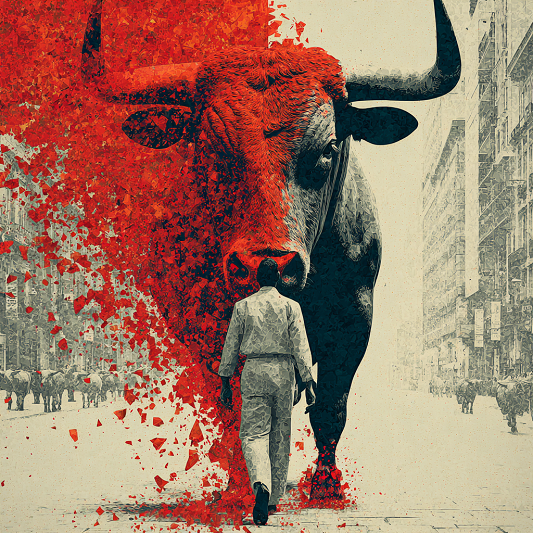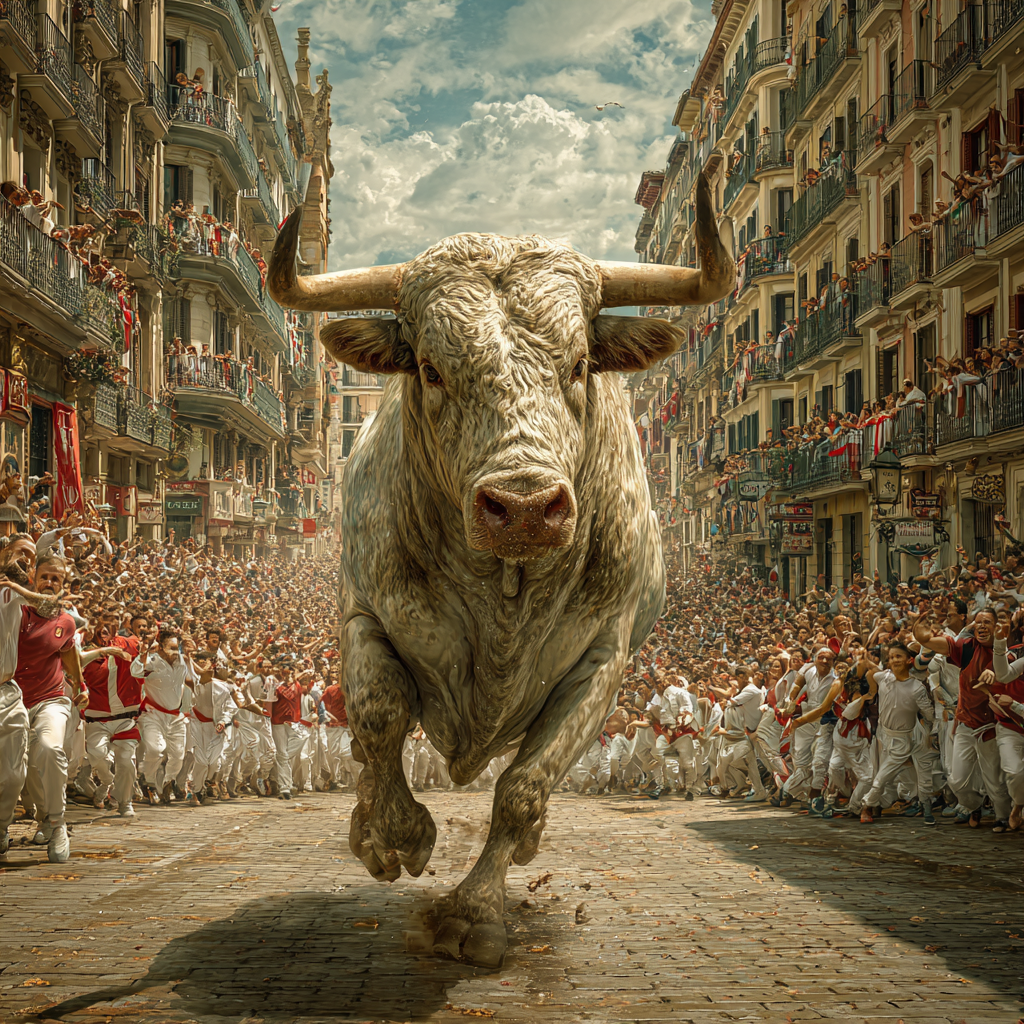Your number one place to find free festivals and events
San Fermín Festival in Pamplona: An Explosion of Tradition and Celebration
Every year, from 6 to 14 July, Pamplona, the bustling capital of Navarre, Spain, turns into a sea of red and white for the San Fermín Festival, better known as the Sanfermines. This world-famous festival, immortalised by Ernest Hemingway in his novel The Sun Also Rises (1926), attracts over a million visitors from all corners of the globe. With adrenaline-pumping bull runs (encierros), colourful parades, fireworks, and non-stop partying, San Fermín is a unique blend of tradition, excitement, and pure joy. Let's dive into the magic of this nine-day spectacle, with a few tasty anecdotes and tips to make your visit unforgettable!


A Historical Fiesta with a Sacred Core
The San Fermín Festival, which will take place from 6 to 14 July in 2026, has its roots in the Middle Ages and honours the patron saint of Pamplona, San Fermín. According to legend, Fermín was the son of a Roman senator in 3rd-century Pamplona, converted to Christianity by the priest Honestus. He became bishop of Toulouse at the age of 24 and was later tortured and beheaded in Amiens, which explains the red scarf (pañuelo rojo) worn by revellers as a symbol of his martyrdom. Originally celebrated on 10 October, the festival was moved to 7 July in 1591 due to poor autumn weather and merged with a cattle market and bullfights. This gave rise to the modern Sanfermines, where religion, commerce and celebration merge.
The festival begins on 6 July at 12:00 noon with the chupinazo, a firework rocket launched from the balcony of the town hall, followed by the cry of "Viva San Fermín! Gora San Fermín!" Thousands of people dressed in white with red scarves and sashes fill the Plaza Consistorial, spraying champagne and sangria, and immersing themselves in a week of celebration. It ends at midnight on 14 July with the melancholic song Pobre de Mí (‘Poor Me’), during which candles are lit and scarves are removed, followed by spectacular fireworks.
The Highlights of San Fermín
The Encierro: Running with the Bulls The most iconic part of San Fermín is the encierro, the running of the bulls, which takes place every morning from 7 to 14 July at 8 a.m. Six fighting bulls and six steers thunder along an 849-metre route through the narrow streets of the old town – from the Cuesta de Santo Domingo via Calle Estafeta to the Plaza de Toros. Thousands of daredevils, mainly young men dressed in traditional white and red, run ahead of the bulls to prove their courage. The spectacle lasts only 2-4 minutes, but the adrenaline rush is unparalleled. Although dangerous – 15 people have died since 1910, the last in 2009 – it attracts adventurers from all over the world. A tip: want to watch instead of run? Rent a balcony or watch from the fences for a safe experience.
Gigantes y Cabezudos: Giants and Bigheads Every day at 9:30 a.m., the Comparsa de Gigantes y Cabezudos parades through the streets, an enchanting parade of eight giant, three-metre-tall figures representing kings and queens of Europe, Africa, Asia and America, along with ‘bigheads’ (cabezudos) and other colourful characters. Children and adults clap and dance along as the figures swing to the music of bagpipers and txistularis (flute players). A funny moment from 2023: a cabezudo tripped over a child who got too close, but the crowd burst into applause when the figure picked up the little one and did a little dance!
The Procession of San Fermín On 7 July, the saint's feast day, a 15th-century statue of San Fermín is carried through the old town, accompanied by dancers, singers, the mayor and the bishop of Pamplona. The procession ends at the church of San Lorenzo, where a mass is held. A moving moment is the jota, a traditional Navarrese dance performed at the San Fermín well in the Plaza del Consejo. For many locals, this religious aspect is the heart of the festival, a moment of calm amid the revelry.
Fireworks and Peñas: Non-Stop Party Every evening at 11 p.m., an international fireworks competition lights up the sky above the Citadel of Pamplona, a spectacle that brings families and revellers together. Meanwhile, the peñas, organised groups of friends such as the historic La Única (founded in 1903), create a lively atmosphere with music, dancing and litres of sangria. A legendary anecdote: in 2018, a peña organised a spontaneous dance competition in the Plaza del Castillo, where an 80-year-old grandmother stole the show with her flamenco moves, much to the delight of the crowd!


Why San Fermín Is a Must-Visit
San Fermín is more than just bull running; it is a celebration of community, culture and joie de vivre. The streets of the old town (Casco Viejo) buzz day and night with concerts by the La Pamplonesa band, street theatre, Basque folk dancing, and pintxos routes (snacks such as mini croquettes and squid skewers). The Plaza del Castillo is the epicentre of the festivities, where you can enjoy churros with hot chocolate or an aperitif in a lively bar. For families, there is a funfair at the Corralillos, where children can see the bulls up close for just €2, and plenty of child-friendly activities.
The festival attracts a colourful mix of people: from devout locals to adrenaline-seeking tourists and partying youngsters. Thanks to Hemingway's book, San Fermín became a worldwide sensation, and his statue at Café Iruña is still a place of pilgrimage for literature lovers. Pamplona's hospitality makes everyone feel at home, whether you're dancing in the streets or singing jota songs.
A Fiesta to Remember
The San Fermín Festival is a whirlwind of tradition, excitement and fun, where the streets of Pamplona come alive with music, dance and courage. Whether you're running from the bulls, dancing with the gigantes, or enjoying fireworks with a glass of sangria, this festival will set your heart racing. As one visitor wrote on X, ‘San Fermín is chaos, joy and brotherhood all rolled into one – you have to experience it to understand!’ So, put on your red and white outfit, sing Viva San Fermín, and dive into this unforgettable fiesta from 6 to 14 July 2026. Pamplona is waiting for you!
Practical Tips for a Top Experience
Book Early: With a million visitors, accommodation is scarce. Hotels in Pamplona are often full, but consider campsites or villages in the surrounding area such as Sanguesa. The last days of the festival (12-14 July) are quieter in terms of bookings.
Wear the Outfit: A white shirt, white trousers, red scarf (pañuelo) and red sash (faja) are a must. Only tie the scarf around your neck after the chupinazo.
Safety First: Running in the encierro? Be prepared and sober – it's risky. Prefer to watch? Book a balcony through sites such as www.pamplonafiesta.com.
Taste the Flavours: Go pintxo hunting in the old town and try local Navarre wines. The bars around Plaza del Castillo are hotspots.
Accessibility: Pamplona is easily accessible by train or bus from Madrid or Barcelona. Parking can be difficult, so use public transport or the car parks outside the city.

